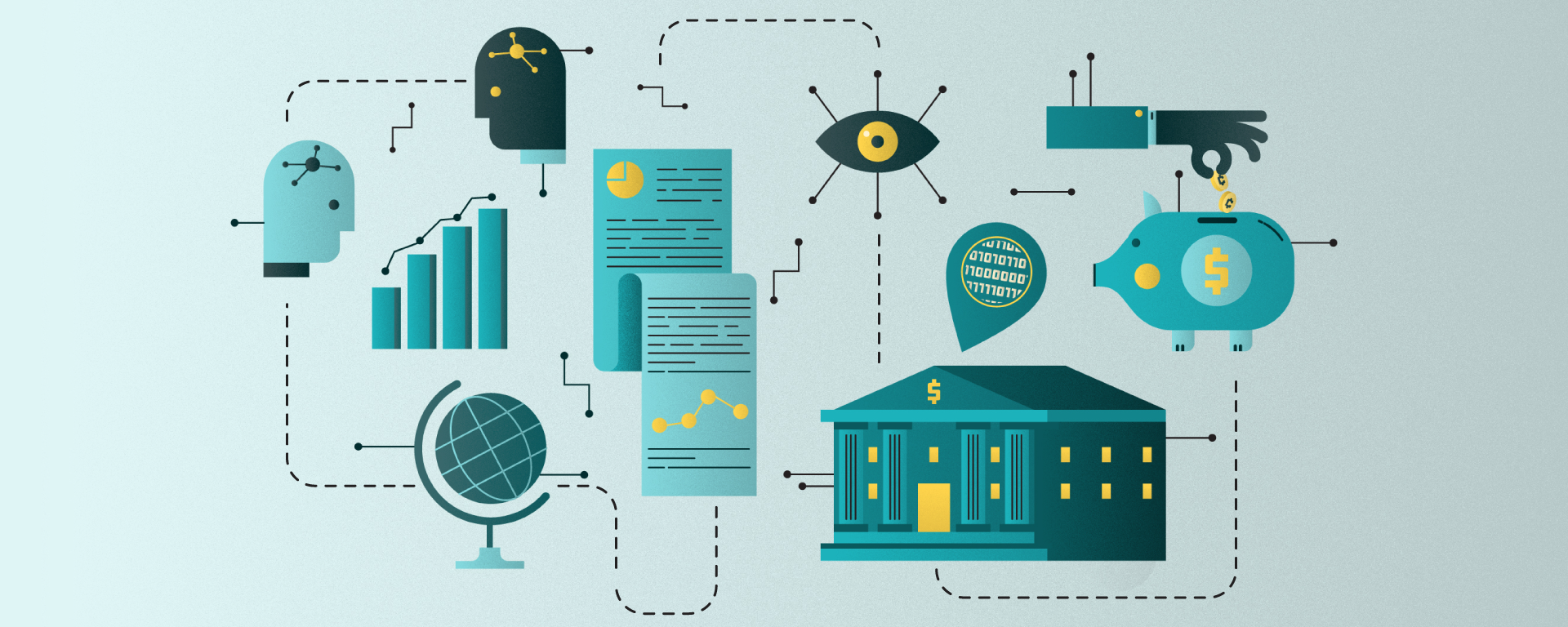Banks have always had huge amounts of data; at major, money-center banks it runs into petabytes, but they have traditionally used only a fraction of it. The definition of big data in finance is continually evolving, but the concept starts with data too big for traditional tools like relational databases.
The leading bank users of big data are employing it to understand each customer as an individual for improved customer service and more effective cross-selling and pricing. Interest rates are a good example. Big data can help a bank see which customers are interest-rate-sensitive to help them retain existing customers and attract new ones without giving away any more than necessary. Big data in finance can also provide insight into how long an individual customer will stay and what their value will be over that time.
Looking to New Sources
Banks need to rely more on data now because as banking becomes more digital, bankers are losing their personal interactions with customers. They will have to rely on data such as product searches on the bank’s website or comments on social media to understand customers and spot opportunities like car loans, mortgages and college savings accounts. Novantas, a consulting firm with experience in banking, reports plenty of gaps and conflicts as banks seek to become more digital, and advises that mastering big data will be essential in helping banks attain that coveted point where a single data management platform can not only compile internal, vendor and web-derived data from customers, but also apply consistent sets of models and rules as well as supply continuously updated output on which to base coordinated research.
Fortunately for banks, digital banking activity creates information that can be plugged into big data platforms. In its report, “Big Data Alchemy: How can Banks Maximize the Value of their Customer Data?,” Capgemini notes that customer use of web and mobile channels generates an increasing volume of data about customers. The study shows that banks are using a small portion of this data in order to generate insight that will enhance customer experience. Less than half of banks use external data, such as social media, to analyze their customers, and only 37 percent of banks are using live big data, while many others are still in pilots. Additionally, many of those who are using big data are using it for risk management rather than customer analytics. However, research shows that banks that apply analytics to customer data have a four percent point lead in market share over banks that don’t, suggesting that key areas to use big data are customer retention, market share and increasing share of wallet.
Clear Benefits
Banks that got big data right have seen significant returns. US Bank focused on multi-channel data and integrated data from online and offline channels and saw its lead conversion rate improve by over 100 percent, according to CapGemini. Community banks and credit unions could find themselves losing market share if they don’t invest more to provide digital services; after surveying banks and credit unions in the U.S., the 2016 Guide to Financial Marketing published by Digital Banking Report noted that national and regional banks are pulling ahead of community banks and credit unions in developing digital channels and using analytics.
According to the guide, “The impact of this emphasis was recently noted by JD Power, where the largest banks recorded the highest satisfaction ratings. This could become an Achilles’ heel for smaller institutions that minimize the importance of meeting the expectations of an increasingly digital consumer.” The largest banks appear to be doing a better job of data analytics, but nobody is out of the big data woods yet, the report added — this year’s survey indicated that 31 percent admitted to using more guesswork than hard data, while a mere 10 percent said they were very driven in quantifying marketing ROI.
The recipe for success in financial marketing is going to have to feature a more realistic focus. According to the guide, “Most of the tools used by financial organizations to measure success are ‘macro’ measurements that are not easily correlated to specific marketing initiatives or households. As a result, while they measure the movement of funds, number of overall accounts or consumer satisfaction, they are not actionable on the micro level.”
To learn more about big data trends in finance, subscribe in the box to the right.








